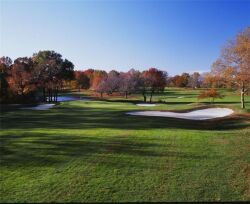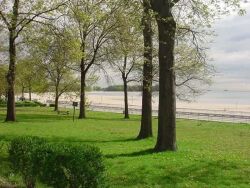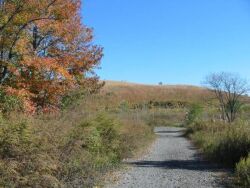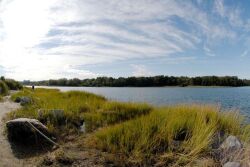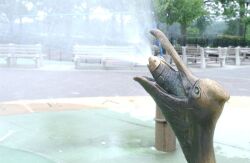Pelham Bay Park
Siwanoy Trail
The Native American Siwanoy inhabited the land along the coastlines of the Long Island Sound, Eastchester Bay, and Pelham Bay, between Connecticut and the southern Bronx. Siwanoy translates roughly as “southern people,” and is loosely applied to the many localized native groups. The Siwanoy resided in small camps rather than villages, and lived off the rich natural resources of their environment, hunting, gathering fruit and nuts from interior woodlands, and fishing the surrounding bays.
The shores of today’s Pelham Bay Park served as sites for sacred ceremonies and burial grounds, and were a source of wampum or sewan – beaded belts that were highly valued for ceremonial and diplomatic purposes among native tribes. For a brief period, wampum served as the principal currency of Dutch New Amsterdam. The entrance to the Kazimiroff Nature Trail and the northwestern shore of Hunter Island, with the Gray Mare and the Mishow boulders, are believed to have been two very important Siwanoy ritual sites.
The Siwanoy were resistant to settlement by the Dutch and English colonists. Despite an active and profitable fur trade with the Siwanoy, the colonists disregarded the land rights of native groups and established settlements and manors throughout New Amsterdam. Though the legal purchase of land was encouraged by the Dutch authorities, the concept of land as a commodity was alien to the native tribes of the area. The Siwanoy did not believe that one person could own and control land.
After an intense period of warfare during the 1640s with Dutch and English settlers and having had their numbers further depleted by disease, the Siwanoy finally sold the land to Englishman Thomas Pell (1613-1669) in 1654, under the observation of several Siwanoy and English settlers at the Treaty Oak. The original oak eventually died, but was replaced with a new oak to mark the site of the treaty. The new tree is now protected by an iron gate. To maintain a peaceful relationship, Pell agreed to allow the Siwanoy to reassess the boundaries of his claim each year. The Pell manor is in what is now the eastern half of the Bronx and Westchester County. One of the Siwanoy to sign the treaty was Ann-Hoock, or Wampage, reported to be the murderer of Anne Hutchinson. The Siwanoy, along with the other tribes in the area eventually fled the hostile conditions of the Bronx to interior Connecticut and upstate New York.
The Siwanoy traded along a route similar to this trail. Pell’s Point, now Rodman’s Neck, was an important market place for the Siwanoy, where wampum could be bartered for other important goods. They traveled along the path to the Hudson River and points along Long Island Sound. The Siwanoy are said to have used nearby Glover’s Rock as a lookout point. The Appalachian Mountain Club cleared this 1.8-mile trail in the winter of 1988, and the Siwanoy Trail opened to the public on March 20, 1989. The trail runs through a 23 acre forest southwest of Orchard Beach. The plant life includes various oaks and hickories, American beech (Fagus grandifolia), black birch (Betula lenta), tulip trees (Liriodendron tulipifera), flowering dogwood (Cornus florida), American hornbeam (Carpinus caroliniana), white ash (Fraxinus americana), and green ash (Fraxinus pennsylvanica).
Check out your park's Vital Signs
Clean & Safe
Green & Resilient
Empowered & Engaged Users
Share your feedback or learn more about how this park is part of a
Vital Park System

Know Before You Go

Contacts
Pelham Bay Park Administrator's Office: (718) 430-1891
Bartow-Pell Mansion Museum: (718) 885-1461
Park Enforcement Patrol: (718) 430-1815
Pelham Bay & Split Rock Golf Course: (718) 885-1258
Turtle Cove Driving Range: (718) 885-2646
Orchard Beach Nature Center: (718) 885-3466
Urban Park Rangers: (718) 548-0912
Events and General Parks Information: 311
Bronx Equestrian Center: (718) 885-0551
Friends of Pelham Bay Park: (718) 430-4685
Bronx Recreation: General Information: (718) 430-1825
Bronx Recreation: Special Events Permits: (718) 430-1848
Bronx Recreation: Sports Permits: (718) 430-1840
Bronx Recreation: Tennis Permits: (718) 430-1848

